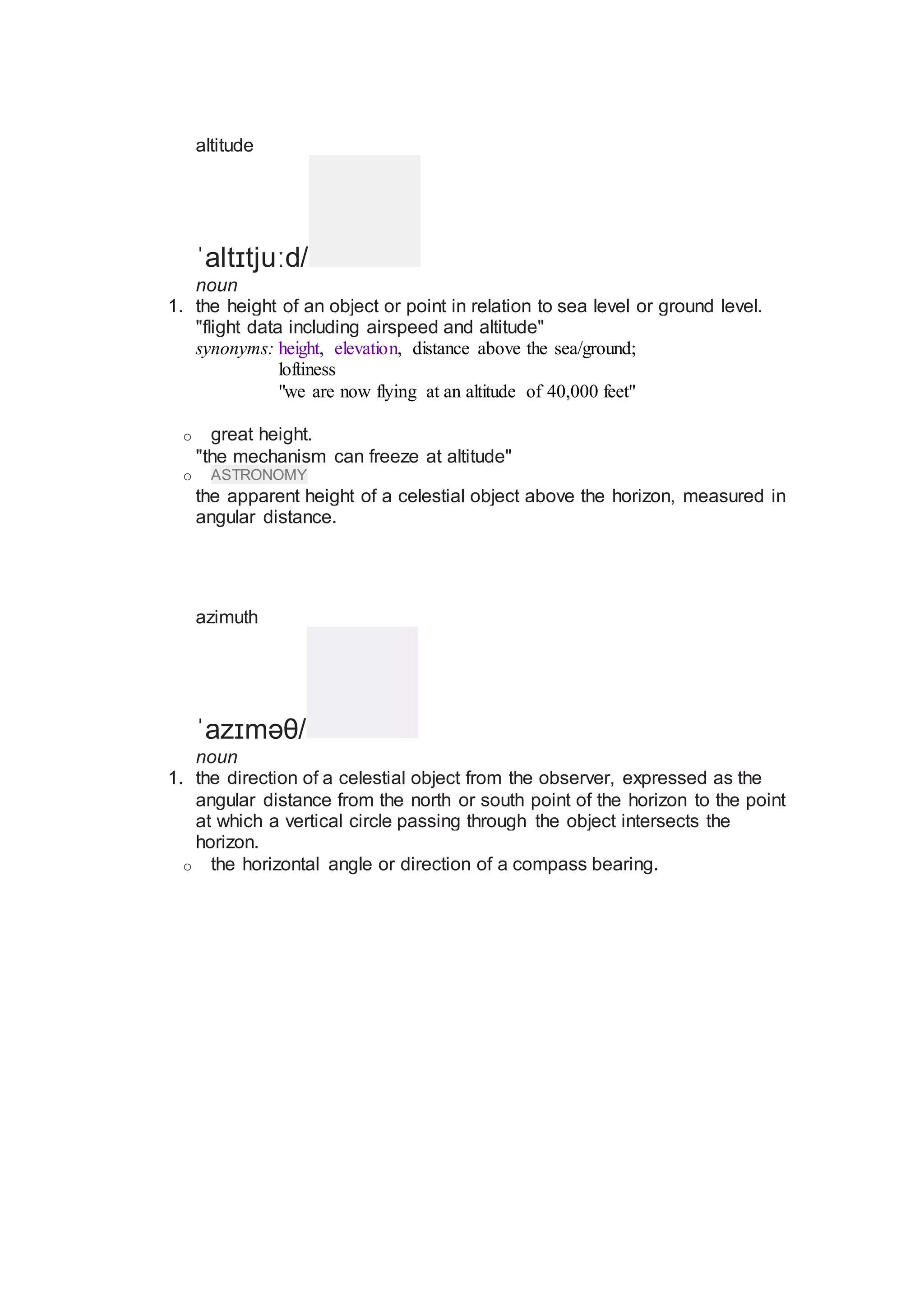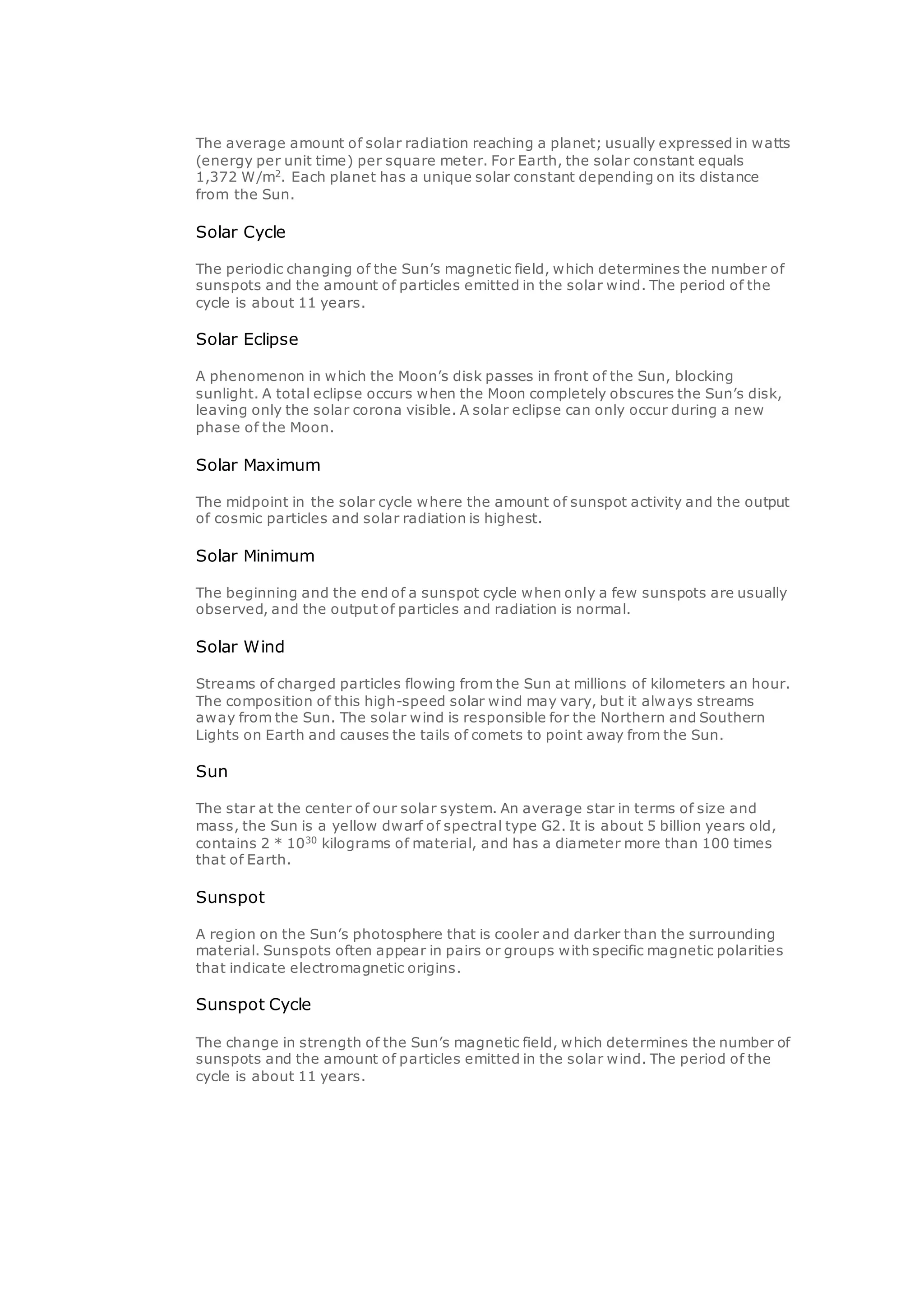This document defines terms related to astronomy and space science. It provides definitions for terms like altitude, azimuth, aurora, chromosphere, convection zone, corona, coronal hole, flare, photosphere, prominence, solar constant, solar cycle, solar eclipse, solar maximum, solar minimum, and solar wind. It also defines terms like sun, sunspot, sunspot cycle, absolute brightness, angular resolution, angular size, apparent brightness, arc minute, arc second, astronomer, astronomical unit, baseline, blueshift, celestial sphere, collecting area, constellation, core, cosmic abundances, declination, degree of arc, differentiation, diffraction grating, ellipse, field of view, geocentric, infrared telescope

















